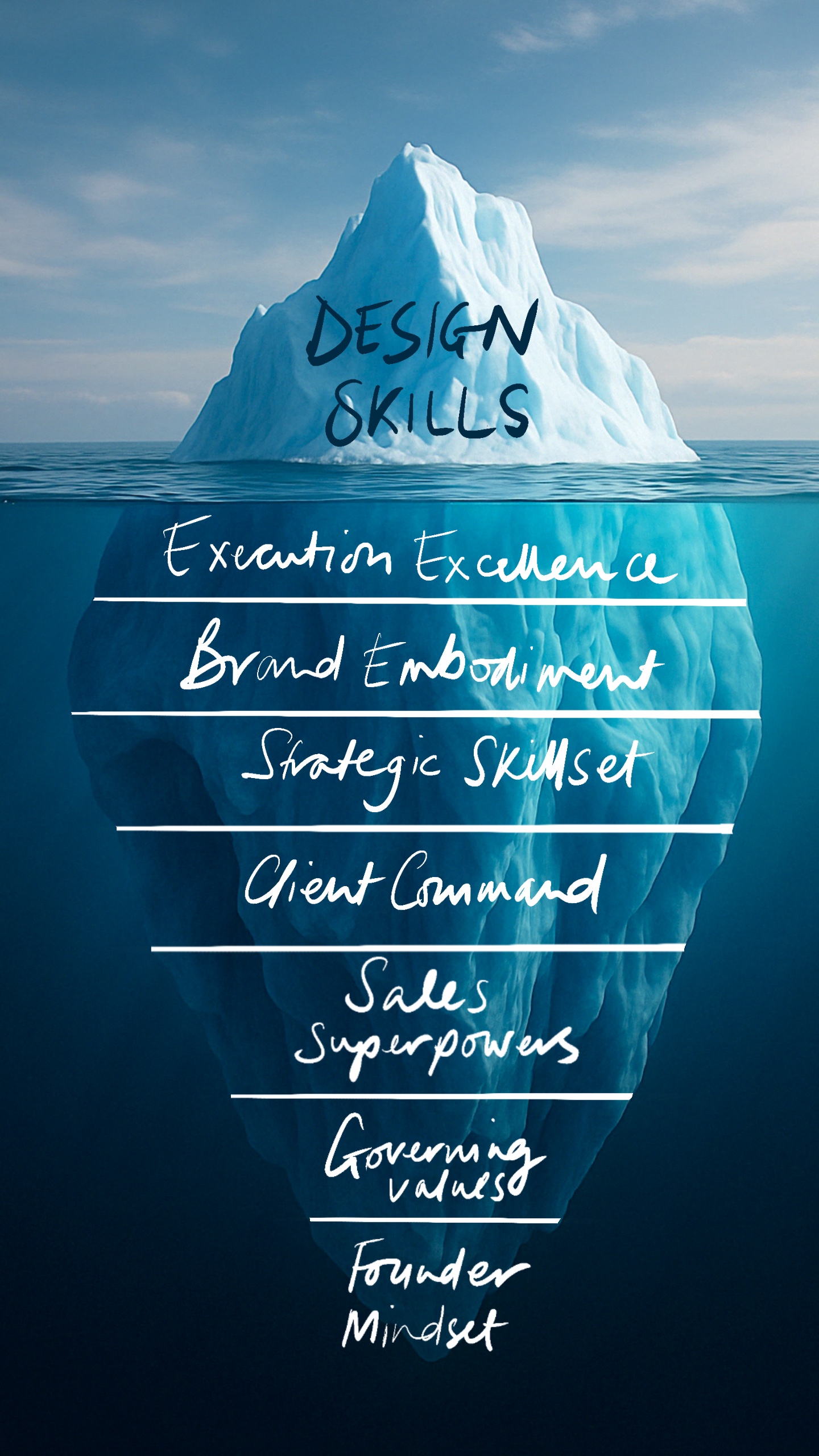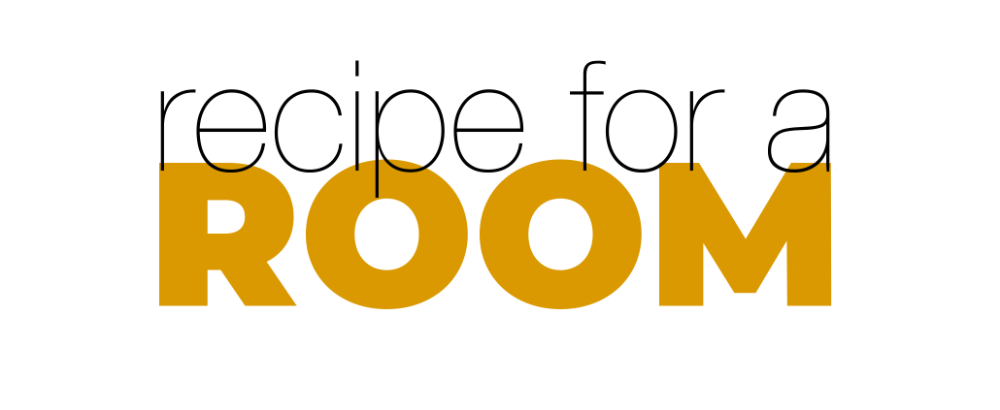
What the Top 5% Know: The Hidden Anatomy of a Successful Interior Designer
Apr 19, 2025In my 17 years at the KLC School of Design, I taught more than 1,500 interior design students. I worked closely with around 500 of them: talented, motivated, often brilliant individuals chasing the dream of running their own design studios. Each graduating cohort held the same promise, and yet the same pattern always emerged.
Roughly 5% of my students would go on to launch successful residential design practices, businesses that were not only still trading five years later but thriving, respected, and expanding.
The rest either sought paid employment in established firms or quietly returned to the industries they had left behind, their dream of creative self-employment abandoned.
Why?
Here’s what it wasn’t: it wasn’t about design talent.
Some of the most gifted design thinkers I taught were among those who either gave up or chose not to pursue design entrepreneurship.
And conversely, not every founder of a successful practice was the most dazzling creative in their class. But those who made it - who became visible, profitable, and trusted by clients - shared something more subtle, more powerful, and much more rare.
They had presence: impressive professional and commercial skills, and they were hard-working, dedicated, and willing to shoulder the full weight of what it meant to lead. Not because they relished it, but because they understood that becoming the person their business needed was non-negotiable.
The Thought Experiment
Think of the residential design practice you most admire. If a genie offered you a swap, whose business would you take? Why them?

It’s tempting to point to their aesthetic: the rooms they create are original, layered, perfectly lit, somehow effortless. But pause. If you focus only on their design output, you’re missing the real magic.
You should be looking at the founder.

What you admire in their business success is a by-product of how they think, behave, show up, and lead. The strength of their business is a reflection of their own internal clarity, confidence, and consistency.
This is what I observed over and over again: the students who succeeded had more than design talent. They embodied the seven core facets of a successful design entrepreneur.
What are these? I just happen to have the answer:
The 7 Core Facets of a Successful Design Entrepreneur

Each of these is a muscle. You may already be strong in some areas but under-developed in others. The point isn’t to be perfect, but to become aware of what’s required, and then build it, intentionally.
1. FOUNDER MINDSET
Your internal architecture: beliefs, resilience, boundaries, ambition.
This is the scaffolding that supports everything else. Without it, businesses falter under pressure.
With it, they grow through adversity.
Signs you have it:
- You bounce back quickly after rejection
- You don’t overwork to prove your worth
- You have a vision and are determined to reach it
- You seek constructive feedback even when you know it will be uncomfortable
- You don't need regular encouragement to keep going
- You decide how to spend your time and energy, rather than letting urgency or exhaustion decide for you.
Ways to strengthen it:
- Develop a regular mindset practice (journaling, coaching, affirmations)
- Practice saying no as an act of self-respect
- Separate your self-worth from client feedback or market trends
- Practise noticing self-judgment and reframe it with curiosity
- Celebrate your improvement as well as your outcomes
- Set targets and regularly measure progress
2. GOVERNING VALUES
I’m not talking about the core values of your business (which should align with your governing values but could be slightly different), Your governing values are your compass: the values you live by and lead with.
Inspired by Hyrum Smith’s work, this is about choosing where you’ll focus your life’s energy: recognising the endeavours and relationships that mean the most to you, and - very importantly - governing values help you to firmly set aside distractions. When your decisions reflect your deepest priorities, your business feels congruent, and so do you. I have blogged about Governing Values in the past (link below) look at the earlier blogpost to find suggested ways to isolate them.
Signs you have them:
- You feel congruence between how you work and what you believe
- You say no with grace and without guilt
- You know your priorities and recognise distractions
- You actively build your business to serve your governing values
- Your clients share your ethos and energy
Ways to develop them:
- Read this blogpost and work through the experiment there
- They are most useful in helping you avoid distractions: audit your weekly calendar against them
- Use your values to guide tough decisions - in work and life
- If you allow them to, they'll lead you to connect with the right clients, and with the right collaborators.
3. SALES SUPERPOWERS
How you invite clients in: with clarity, conviction, and charisma.
Sales isn’t manipulation. At its best, it’s service: helping someone make a confident decision that improves their life. When you recognise your ideal client and have created suites of services to meet their needs specifically, your enthusiasm becomes contagious.
Signs you have them:
- You can explain what you do without jargon or fluff
- You feel energised by enquiry calls, not anxious
- Clients understand the impact of your work before they see a drawing
How to develop them:
- Reframe selling as storytelling
- Focus on outcomes - on transformation - not just deliverables
- Practice your discovery call script until it feels natural
- Learn to enjoy talking about money
4. CLIENT COMMAND
Your ability to lead with calm authority through every phase of a project.
Interior design practice attracts individuals who are keen to please, the whole point is to elevate experience. But leading a project well means commanding the process - and the client experience - with grace and clarity.
Signs you have it:
- You’re calm and clear in the face of client wobble
- You establish authority early without losing warmth
- You avoid scope creep and emotional labour traps
- You have a playbook to handle the most challenging client situations
- And, you have lots of positive testimonials from enthusiastic clients
How to develop it:
- Clarify your client onboarding process: what do clients need to know and when?
- Create simple scripts for difficult conversations
- Practise saying “Let me think about that and come back to you” to buy time and space
- Set expectations early and often
- Write a clear scope of work and revisit it regularly
- Hold boundaries with kindness and firmness
- Explore your emotions and practise difficult conversations in low-stakes moments
5. STRATEGIC SKILLSET
The thinking and planning that makes your business viable and scalable.
This is where design meets direction. Strategy lets you work with purpose, not just reactively. So many designers can't describe their USP (unique selling proposition), instead they list weak, generic goals common to every practice. You should have detailed long-term plans that drive business growth - at least in terms of revenue and profit. You should regularly revisit, check and measure key indicators within your business.
Signs you have it:
- You set goals and milestones - and track progress
- You know your margins and where your money comes from
- You’ve designed your services to serve both client and business
- You have a long-term business plan, and a detailed marketing plan
- You take planning days annually, quarterly, and monthly; you also plan each week.
How to develop it:
- Create a simple one-page business plan
- Track income, enquiries, and conversion rates monthly
- Identify your niche and ideal client in detail
- Review your pricing and profitability every quarter
- Describe your ideal client in one paragraph—then check if your website reflects that
6. BRAND EMBODIMENT
How you show up - and what it says about your business.
Your brand isn’t your logo. It’s the feeling people get when they experience you and your work. It should be coherent, deliberate, and aspirational.
Signs you have it:
- Your brand feels like a natural extension of you
- Your visual presence is consistent across platforms
- You can express the values of your brand, your personal values, and the overlaps and nuances
- You feel confident being visible as a founder
- You can point to ways you're developing your authority as a thought leader in your niche
How to develop it:
- Align your personal image with your business values
- Invest in photography and visual assets
- Identify the USPs of your business, and develop brand assets around these
- Choose three brand values and audit your touchpoints against them
- Be visible regularly in ways that feel authentic to you
7. EXECUTION EXCELLENCE
The consistent delivery that builds client trust and long-term reputation.
It’s not glamorous, but it’s essential. Execution is where your clients' dreams become reality. Time invested in developing the systems and processes is well-spent; you'll reap the rewards over and over.
Signs you have it:
- You meet deadlines and don’t ghost when busy
- You deliver projects to a high standard - and finish strong
- You maintain presence even when things aren’t perfect
How to develop it:
- Systematise repeatable tasks (using templates, checklists, and workflows)
- Block time weekly for marketing and business development
- Use a project tracker to manage deadlines and responsibilities
- Follow up after delivery to learn and improve
Design talent is a gift. But business success is built. It’s created day by day through mindset, values, leadership, and consistent action.
The question is not: Am I good enough? The question is:
Am I willing to become the person this business needs me to be?
Ready to Build What’s Below the Surface?
This blog post encapsulates the heart of the Recipe for Success Bootcamp. Over five transformative weeks, we work intensively on:
• Strategic business planning
• Marketing and brand building
• Mindset, time management, and client management skills
• Personal development, business growth, and leadership
It’s a deep dive into the foundations of business success - the part of the iceberg no one sees, but that makes everything else possible.
Follow along on social media as Bootcamp 2025 gets underway. Between 22 April and the end of 2025, a new cohort of ambitious interior designers will begin the work of strengthening and growing their businesses, working one-to-one with me, and supported by a dedicated, insightful, and collaborative peer group.
Whether you’re just starting out or ready to scale, this is the season to become the person your business needs.
Receive my quick-to-read weekly newsletter...
Sign up for the Hothouse Newsletter: find out what's coming up, and keep up with recent webinars, blogposts, videos, and other events - all focused on excellence in interior design practice.
We hate SPAM. We will never sell your information, for any reason.


